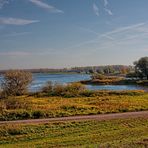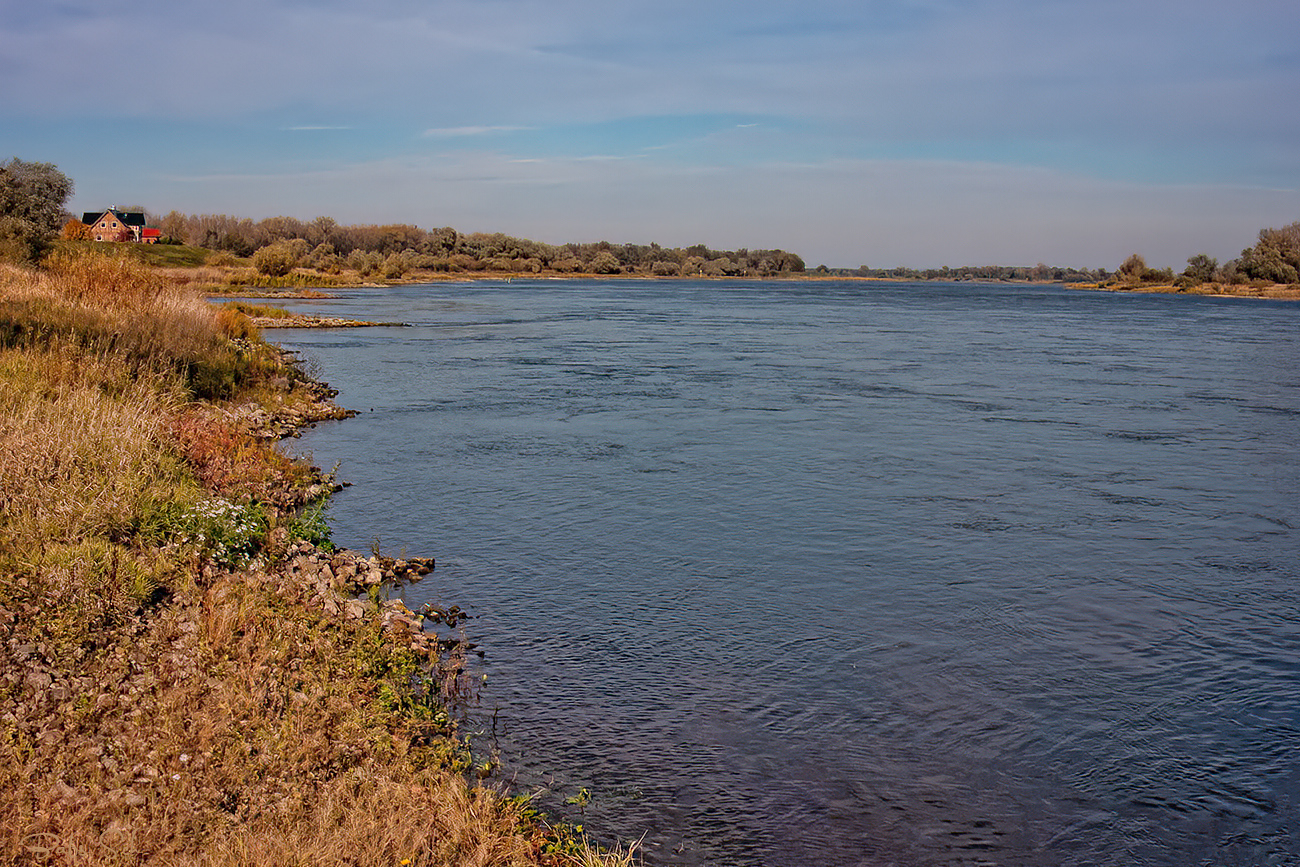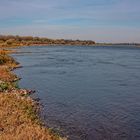Und nun mal
ein Blick in die Gegenrichtung unseres Aberteuerspielplatzes
wo die Elbe Richtung Hamburg fließt.
Natürlich sind wir hier nicht irgendwo in der Wildnis sondern befinden uns in einer der ältesten Siedlungen in der Altmark. Scherbenfunde deuten auf eine wahrscheinlich altslawische Siedlung des 9. oder 10. Jahrhunderts hin. Es ist ein typisches Haufendorf zwischen Elbe und Aland.
Der Ortsname "Wahrenberg" stammt von den Elbhochwassern,
vor denen man sich „wahren“ und „bergen“ musste.
Berühmt wurde Wahrenberg, weil dort im Spätsommer rund 80 Alt- und Jungstörche die ausgedehnten Auenlandschaften rund um das Dorf bevölkern. Hier ist das zweithöchste Storchenaufkommen bundesweit. Mehr als 20 Horste befinden sich im direkten Ortsgebiet.
~~~
And now
a view in the opposite direction from our Aberteuer playground
where the Elbe flows in the direction of Hamburg.
Of course we are not somewhere in the wilderness, but in one of the oldest settlements of the Altmark. Finds of shards indicate a probably Old Slavic settlement from the 9th or 10th century. It is a typical cluster village between the Elbe and the Aland.
The place name "Wahrenberg" comes from the Elbe floods,
from which one had to "protect" and "save" oneself.
Wahrenberg became famous because around 80 old and young storks populate the extensive floodplain landscapes around the village in late summer. This is the second highest stork population in Germany. More than 20 nests are located in the immediate vicinity of the village.
~~~
Et maintenant
un coup d'œil dans la direction opposée à notre terrain d'aventure
où l'Elbe s'écoule en direction de Hambourg.
Bien sûr, nous ne nous trouvons pas n'importe où dans la nature, mais dans l'une des plus anciennes colonies de l'Altmark. Des tessons trouvés indiquent qu'il s'agit probablement d'un ancien village slave datant du 9e ou 10e siècle. Il s'agit d'un village typique de la région Elbe-Aland.
Le nom du village "Wahrenberg" vient des crues de l'Elbe,
contre lesquelles il fallait "se protéger" et "se mettre à l'abri".
Wahrenberg est devenu célèbre parce qu'à la fin de l'été, environ 80 cigognes adultes et jeunes peuplent les vastes plaines alluviales qui entourent le village. C'est ici que se trouve la deuxième plus grande population de cigognes d'Allemagne. Plus de 20 nids se trouvent dans les environs immédiats du village.

Eine Kita
Babs Sch
















ankeforbrig 4. September 2022, 8:53
Sehr schönes Licht und super Perspektive. LG AnkeVitória Castelo Santos 3. September 2022, 20:47
Ich mag sehr. Wie schön!LG Vitoria
Brigitte Schönewald 3. September 2022, 19:42
In feinem Licht und mit schöner Bildgestaltung aufgenommen.LG Brigitte
Susann Kahlcke 3. September 2022, 19:27
Ein Anblick der beruhigend ist....lg
susann
alicefairy 3. September 2022, 19:07
schön gezeigtLg Alice